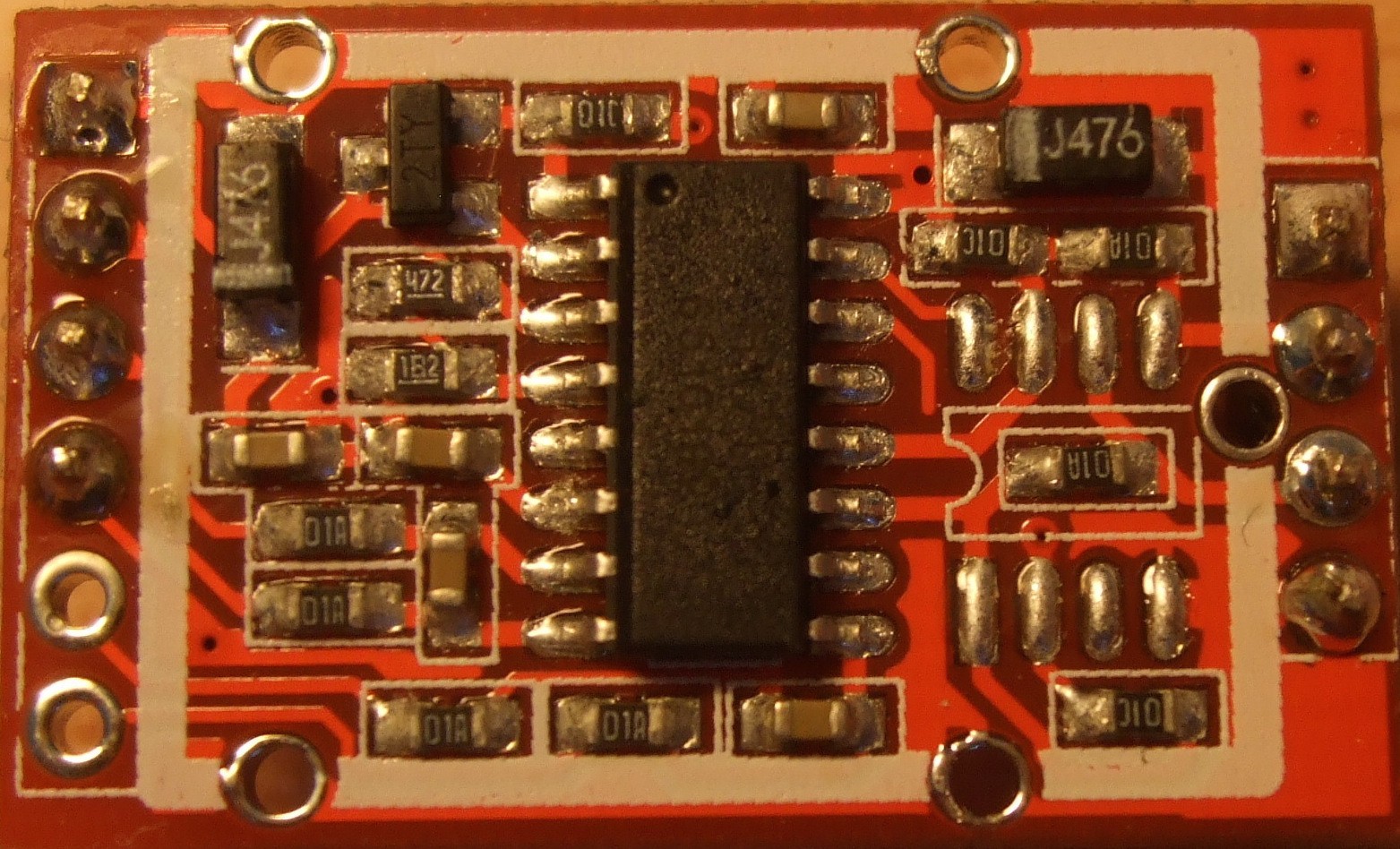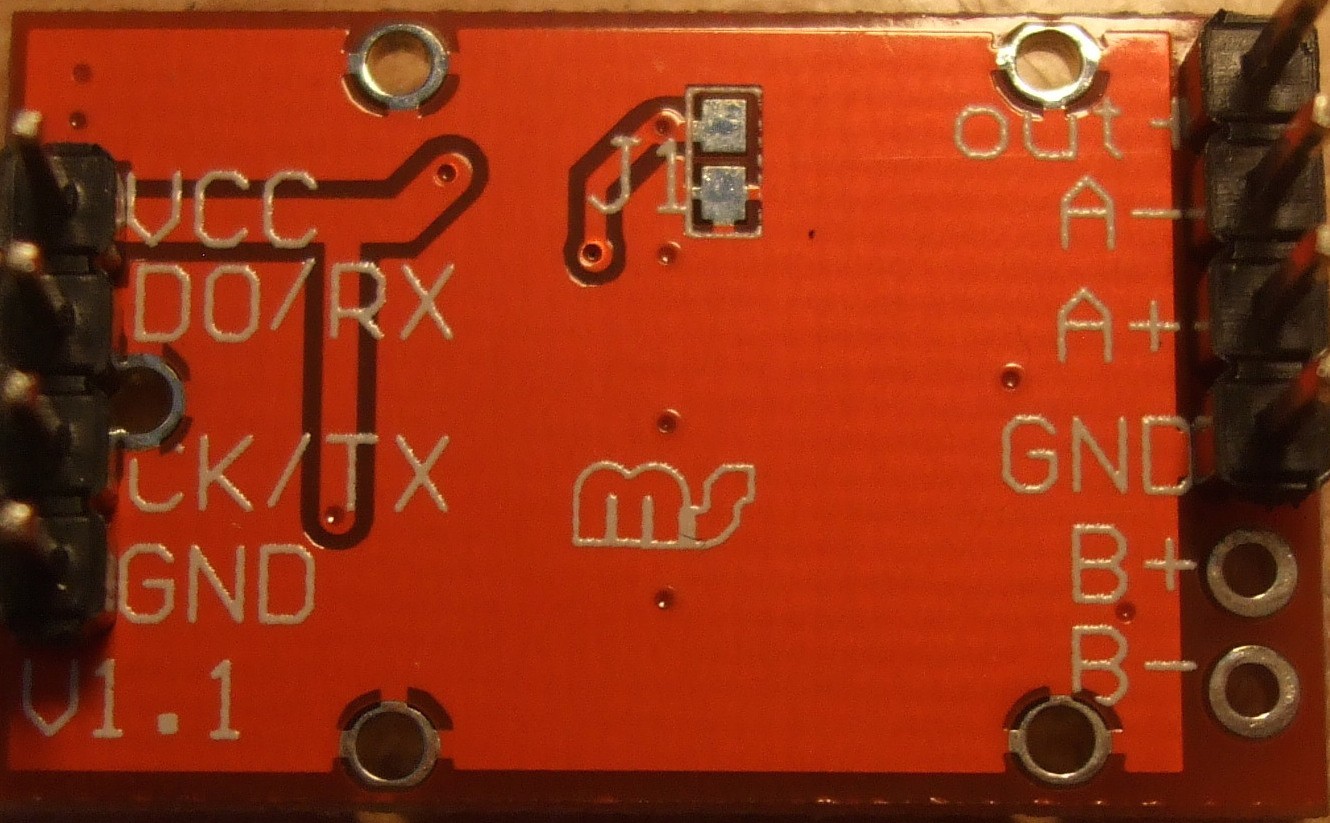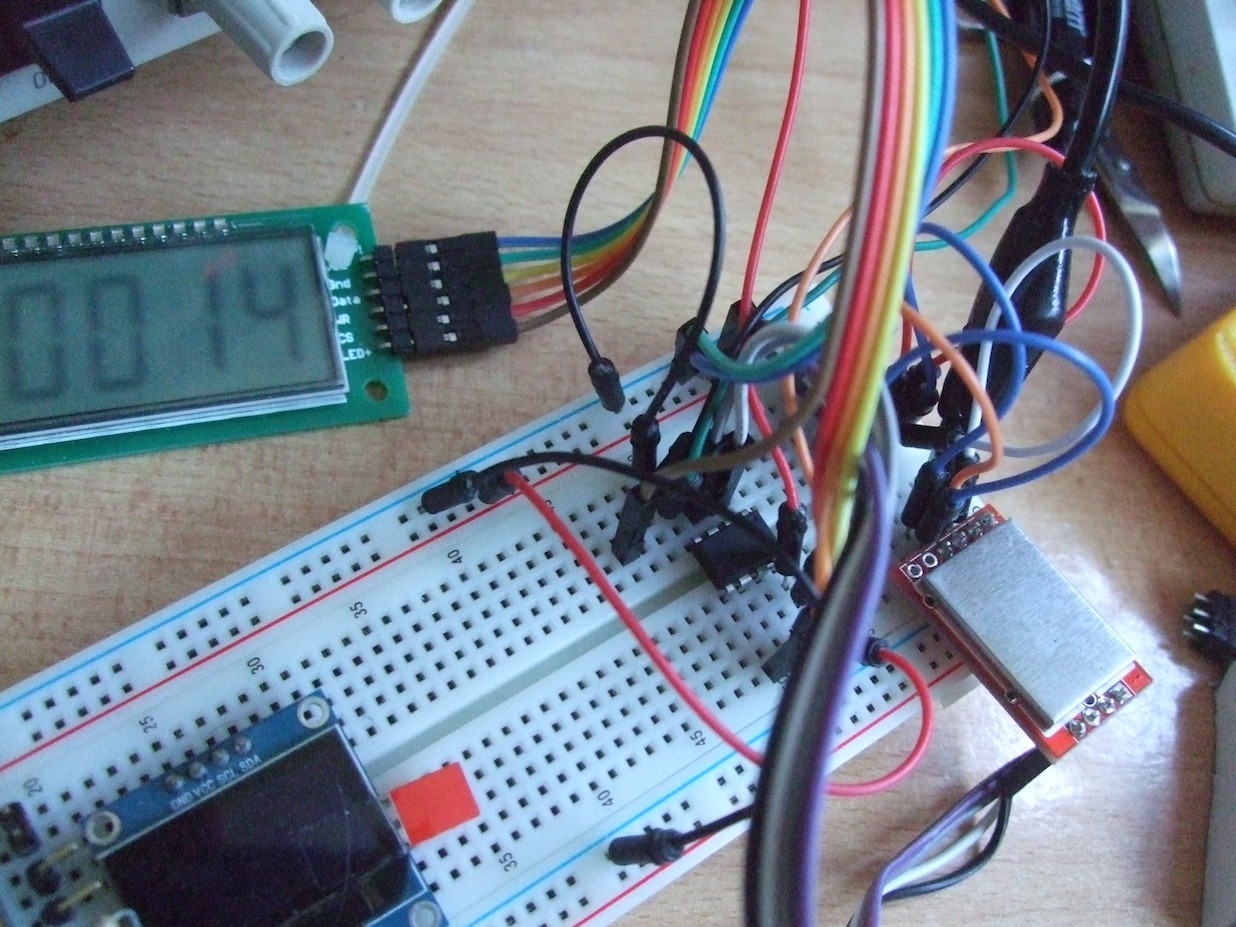All the parts have arrived now, including the HX711 ADC module.


The first step with such small, poorly documented boards is to check out the schematic. As this board did not come with one, it has to be derived. Pencil, paper, and a rubber works OK for small boards.

The most important things I can tell from the schematic are: The digital output/input pins have 10k pullups, and the on chip regulator is set to 1.25*(4.7+1.8)/1.8=4.51 V
(Note the datasheet actually has the formula wrong, and has swapped R1 and R2!)
This is no good, since I'm running it from a lithium battery, so I need to find another resistor pairing to make it approximately 2.6-3 V. (2.6 v as per datasheet minumum, 3 v as 3.2V minus pessimistic dropout). I tried 2.5 v before re-reading the datasheet. In the end, I've chosen the resistors 3.6 and 4.7k, to give 1.25*(3.6+4.7)/3.6 =2.9V. The exact value doesn't matter, though it helps in precision applications to have matched temperature coefficients here. (so the voltage doesn't change with temperature)
Ok, so a quick sketch done with the https://github.com/bogde/HX711 library, and my LCD showed the following:
- 2.9 V on the output voltage.
- By eye, Noise is about ±12 bits (hacky resistor divider attached), or ±7 bits (zero attached)
- Full scale is around ±11 mV (measured by meter as display stopped)
- Approximate sensitivity of 735306 ADC units per mV. (fs = 11.4 mV)
- ~5 µV offset voltage (calculated)
Quick verification then - What should full scale be? - according to datasheet 0.5(AVDD/GAIN), so 9.77 mV. This affects the sensitivity estimate, so something somewhere is out by ~15%. At this point it doesn't matter too much, provided that it doesn't change sensitivity with temperature!
The noise figures are concerning, and additionally the drift which was massive. There is jumper to enable a slower, less noisy reading, and additionally one can average multiple readings. Given the noise contributions of other components, oversampling is probably most suitable. Quantified tests can be carried out - but that is another topic! My main suspicion is the non-strain half of the wheatstone bridge, achieved for now with the slightly strange two independent potentiometers.
The next task (With an arduino to prototype more rapidly with) is to get the serial communications to share fewer pins, so there is one spare on the ATtiny for wake input. Additionally, get the noise figures down to manageable levels.

Discussions
Become a Hackaday.io Member
Create an account to leave a comment. Already have an account? Log In.